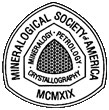 |
The Mineral Identification Key |  |
 |
The Mineral Identification Key |  |
Fusibility is a measure of how much heat it takes to melt a mineral into a globule, or at least to melt the sharp edge of a sharp splinter and make it round over. Quite a few minerals are easily fusible in the flame of a candle or typical cigarette lighter: A small, sharp, splinter held in the flame either melts into a globule or its edges round over easily. So this can be a handy test to do; and a candle or lighter is easy to obtain and keep handy for use in testing. Such minerals are said to have a fusibility of "1" or "2" – though for our purposes the degree of difficulty with which a mineral fuses is not particularly important. Either it does or it doesn’t.
Other fusibility tests can be performed in the home workshop, using a blowtorch. It takes some practice, but it should not be too hard for most people to become proficient at these tests.
Return to Step 9Density and Specific Gravity are not properties easily determined, requiring special equipment; but a result of them, which might simply be called "heft" can come in handy: The denser a mineral is, the heavier it is per given volume. A 1 inch cube of galena is noticeable heavier in the hand than a 1 inch cube of pyrite. A barite crystal of the same size as other similar glassy crystals is likely to feel noticeably heavier. So do cerussite and anglesite crystals. So a mineral’s "heft" can be a clue to its identity. With a little practice a collector can become quite proficient at judging the relative weight of minerals and using that to help establish a sample’s identity.
In the home lab or workshop, specific gravity (S.G.) can be a very useful property in identifying minerals. Collectors should learn about S.G. and test for it routinely when working on "mystery minerals" at home. Any good guide or text covers this topic and methods of testing. Probably the easiest is using a standard triple-beam balance, available from any scientific supply house – or perhaps through the local high school chemistry lab.
[ Table of Contents ] [ Introduction ] [ Identification Kit ] [ Mineral Properties ] [ Environments & Associations ] [ In Conclusion ] [ The Mineral ID Key ]